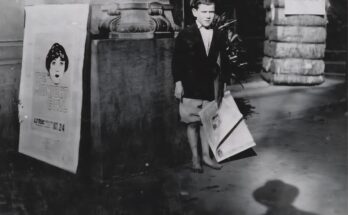In the evening, a transport of 304 Polish prisoners arrived at the Auschwitz concentration camp. Deported by the German occupiers from Warsaw, these men were part of the broader Nazi effort to eliminate resistance and dismantle the Polish intellectual, religious, and social elite. Poland, under brutal occupation since 1939, had become a central target of Nazi terror, and Auschwitz served as one of the most notorious instruments of that oppression. The prisoners spent their first night in fear and uncertainty, unaware of the horrors that awaited them within the camp’s barbed-wire walls.
They were officially registered the following day. Each prisoner received a camp number in place of his name, as part of the Nazi effort to dehumanize and break the spirit of those held captive. This act of registration marked the beginning of forced labor, starvation, disease, beatings, and often death. Among the 304 Poles were 12 Catholic priests — members of the clergy targeted by the Nazi regime for their role in sustaining Polish national identity and moral resistance.
One of the priests among them was Father Maximilian Kolbe, a Franciscan friar known for his deep faith and devotion to the Virgin Mary. Born in 1894, Kolbe had founded the monastery of Niepokalanów near Warsaw and was active in religious publishing. He was arrested for sheltering refugees, including Jews, and for his refusal to be silent under the oppressive Nazi rule. After his arrest, he was sent first to Pawiak prison in Warsaw and then deported to Auschwitz. Upon arrival, he was assigned prisoner number 16670.
In Auschwitz, Kolbe continued his pastoral work despite the horrific conditions. He secretly administered sacraments, offered spiritual support, and shared his meager food rations with fellow prisoners. His presence brought hope to many, even in the depths of despair. The priests in the camp, though treated especially harshly, served as symbols of resilience and spiritual resistance amid the moral collapse engineered by the Nazis.
The most well-known moment of Maximilian Kolbe’s life — and death — occurred in late July 1941. After a prisoner from his block escaped, the camp authorities ordered a brutal reprisal. Ten men were selected at random to die by starvation in an underground bunker. One of the chosen men, Franciszek Gajowniczek, cried out in anguish for his wife and children. It was then that Kolbe stepped forward and offered his life in place of the condemned man, a selfless act that stunned both prisoners and guards.
Kolbe’s offer was accepted. He was taken with the other nine men into the starvation cell. For weeks, he led prayers, sang hymns, and comforted the dying. Witnesses later recalled that the bunker, normally filled with cries and agony, became a place of calm and dignity under his influence. After nearly two weeks without food or water, Kolbe was still alive. On 14 August 1941, the guards gave him a lethal injection of carbolic acid. The next day, his body was cremated.
Maximilian Kolbe’s sacrifice resonated far beyond Auschwitz. After the war, survivors testified to his courage and spiritual leadership. In 1982, he was canonized as a saint by Pope John Paul II, who declared him a “Martyr of Charity.” His story remains one of the most powerful examples of human compassion and self-sacrifice amid the unspeakable cruelty of the Holocaust. Kolbe’s name and number, 16670, are now remembered not as a mark of dehumanization, but as a symbol of resistance and love.
The transport of 304 Poles from Warsaw on that evening brought many into the darkest depths of Nazi oppression, but within that darkness, individuals like Maximilian Kolbe shone with extraordinary light. His life and death remind us that even in the most inhumane circumstances, acts of goodness and humanity can endure — and inspire future generations never to forget.


